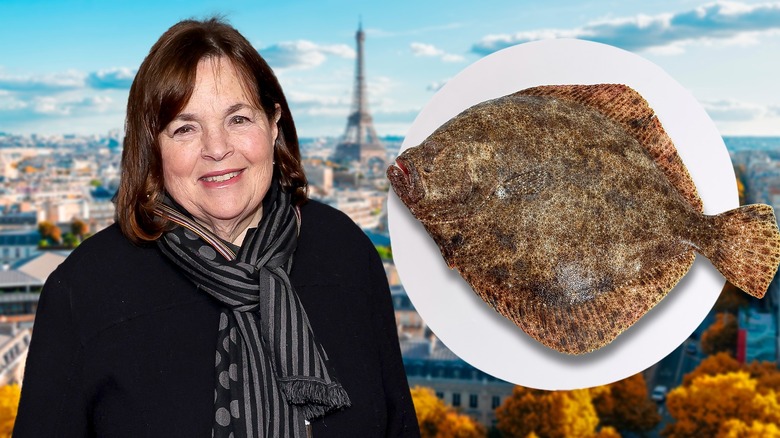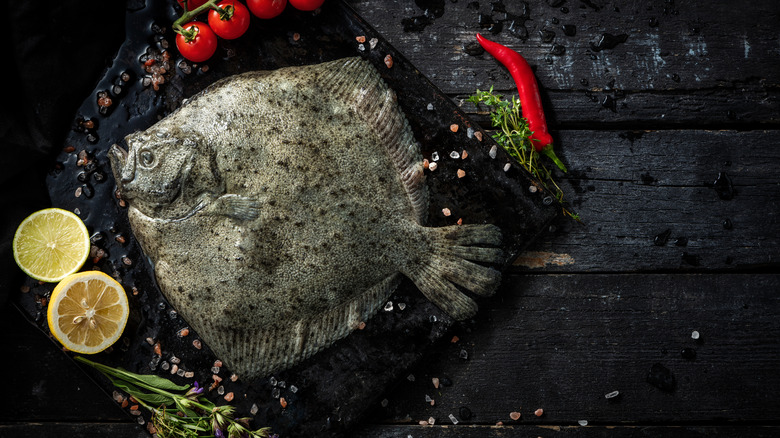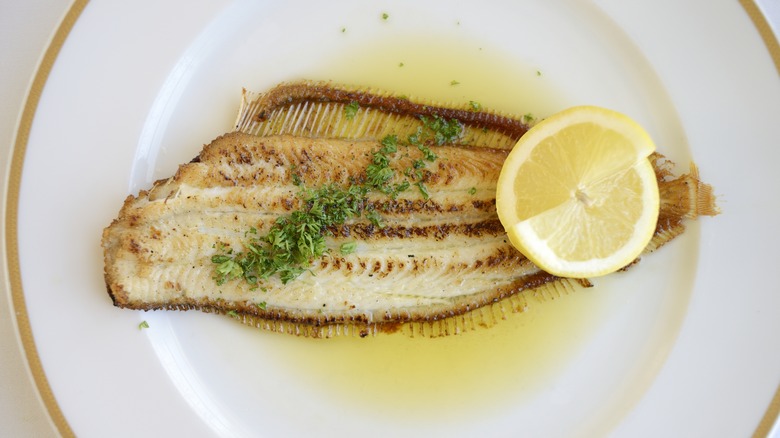The European Fish Ina Garten Buys Whenever She's In Paris
It's no secret that Ina Garten has top-notch taste. As diehard fans know, Garten even has a favorite salt. But her skills extend far beyond grocery shopping in America; she also has a nose for what to pick up while shopping in Paris. In a recent segment for "Today," Garten showcased some of her favorite Parisian purchases. Beyond the obvious choices, like a long baguette fresh from the boulangerie, she revealed her taste for a mostly-European fish called turbot. Usually found in beds of gravel and sand rather than the open ocean, turbot mostly live around the Black and Mediterranean seas, and the east Atlantic from Morocco to Norway. This flat fish is known for its white flesh, which boasts a subtly sweet flavor.
Garten picks up her turbot at the Poisonnerie du Bac in the city's 7th arrondissement. This fishmonger scales and prepares all kinds of fish from sea bass to monkfish, while also selling plenty of shellfish and crustaceans. "It's my favorite fish in Paris," Garten says about turbot. "I'm going to take it back and make mustard roasted fish." That's a Garten specialty, made with both dijon and whole grain mustard, rounded out with crème fraîche, shallots, and capers.
What to know about turbot
As a flat fish, turbot isn't the prettiest creature around. But for most cooks, it's the inside that counts. Specifically, diners are drawn to its bright white flesh that's known for being particularly juicy. Turbot can be a big fish, too: Larger specimens can measure over 3 feet across and weigh around 33 pounds, yielding formidable filets. Expect a buttery texture, pleasantly flaky flesh, and a delicate yet rich taste. It's a good source of protein and also provides essential amino acids, as well as vitamins A, B12, and C (to name a few).
Expect to pay a premium price for turbot, especially if you're on the market for wild turbot — only 5,000 tonnes are caught per year. For the wild version, prices vary, but can range from €38 to over €50 per kilogram in France (around €17 to €22 per pound, or $15 to $20). Prices are generally much lower for farmed turbot. But if you're sourcing it in the United States, even the farmed fish can be around $47 per pound. Farmed turbot is considered a sustainable seafood choice; the sustainability of wild turbot varies depending on where it's fished.
Cooking with turbot
If you want to follow in Garten's footsteps, cooking mustard roasted turbot is a great choice — but it's hardly the only option. Since turbot is on the delicate side, some chefs recommend using wet cooking methods like poaching or steaming to keep everything intact. Be sure to add some extras to the poaching water, like lemon, herbs, or peppercorns so that the fish can absorb some flavor.
That said, pan-frying turbot also works. Just try to be gentle with it due to the more intense heat; the same goes with grilling. A classic French meunière is one way to pan fry it, with turbot filets coated in flour and cooked in butter, before being served with lemon and herbs.
Some chefs also swear by cooking turbot whole (though obviously you'll gut it first). Yes, we know, this sounds like one of those big mistakes to avoid when cooking fish. But these cooks argue that cooking the fish with bones imparts more flavor, even if it's a little more annoying to eat afterwards. Slow-roasting it at a fairly low temperature (say, 300 degrees Fahrenheit) with lemon and herbs is a good starting point; you may need over an hour depending on the size of the fish.


